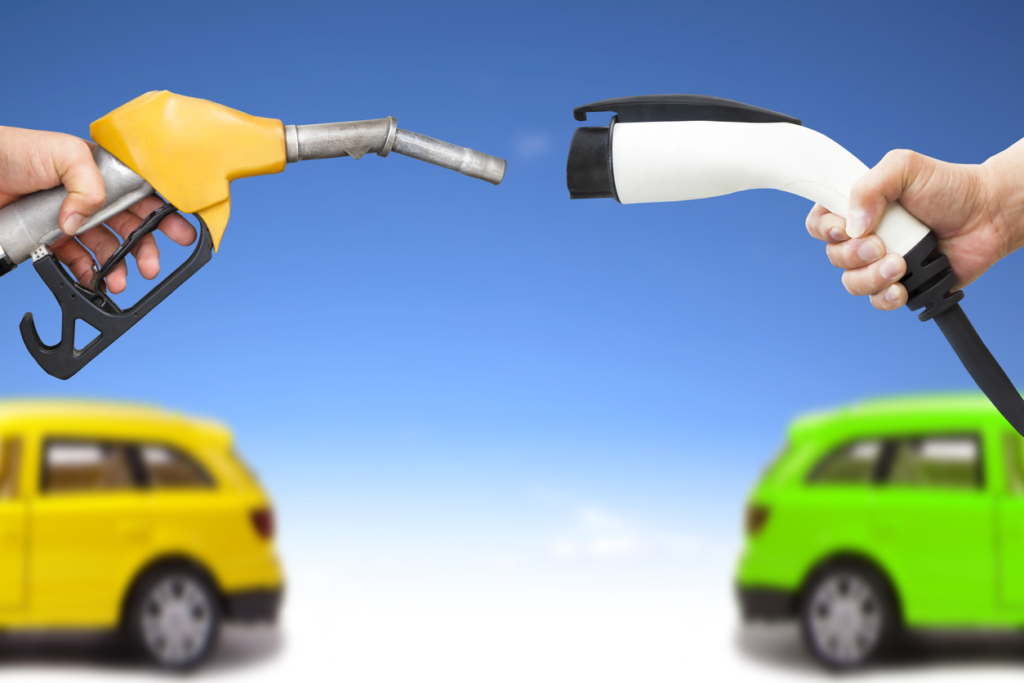The debate between electric vehicles (EVs) and gas-powered cars is heating up in 2025 as U.S. drivers face a big decision: go electric or stick with gas? With rising fuel costs, environmental concerns, and new policies shaping the auto industry, the choice is more complicated than ever. This article dives into what’s driving American car buyers in 2025, why some are switching to EVs, and why others are staying loyal to gas-powered vehicles.

The Rise of Electric Vehicles in the U.S.
Electric vehicles are gaining ground fast. A global study reported a 43% surge in EV sales worldwide in the first quarter of 2025, and the U.S. market saw an 18% increase compared to last year. EVs now make up about 10% of new vehicle sales in the U.S., with hybrids and plug-in hybrids (PHEVs) accounting for another 15%. This means one in four new cars sold in 2025 is electrified, a big jump from just a few years ago.
Why are EVs becoming so popular? For one, they’re cheaper to run. Studies show EV owners can save up to $1,050 a year on fuel and maintenance compared to gas car owners. With gas prices averaging $3.18 per gallon in May 2025, filling up a gas tank is getting pricey. EVs, powered by electricity, offer a budget-friendly alternative, especially for city drivers who charge at home.
EVs are also getting better. New models like the 2025 Acura ZDX Type S boast faster acceleration (0-60 mph in 4.3 seconds) and longer ranges, with some trucks offering up to 370 miles per charge. Plus, charging is easier than ever. The U.S. now has over 210,000 charging stations, growing by about 1,000 per week in late 2024. From grocery store parking lots to Tesla Superchargers (accessible to non-Tesla EVs starting in June 2025), charging options are everywhere.

Government incentives are another draw. Many states offer tax breaks and rebates for EV buyers, making them more affordable. For example, Acura’s ZDX comes with charging credits and equipment included in the price. These perks are convincing more drivers to go electric, especially younger buyers who care about the environment.
Why Gas Cars Still Rule the Road
Despite the EV boom, gas-powered cars still dominate, making up 75% of new vehicle sales in 2025. Why? For many Americans, gas cars are familiar, convenient, and cheaper upfront. The average EV costs $57,400, compared to $40,000 for a gas car, a gap that scares off budget-conscious buyers.
Range anxiety is another hurdle. While EVs are improving, many drivers worry about running out of power on long trips, especially in rural areas with fewer charging stations. Gas stations, with over 1 million pumps nationwide, are far more common and faster to use. Refueling a gas car takes minutes, while even fast-charging an EV can take 20-30 minutes.
Then there’s the infrastructure issue. While urban areas have plenty of chargers, rural drivers often struggle to find them. A 2025 survey in Canada, which shares similar challenges, found that 42% of drivers would consider an EV, down from 68% in 2022, partly due to charging concerns. U.S. drivers in states like Montana or Wyoming face similar doubts.
Policy changes are also slowing EV adoption. In May 2025, the U.S. House voted to block California’s plan to ban gas car sales by 2035, a policy adopted by 11 other states. This move, backed by Republicans and some Democrats, shows resistance to forcing drivers into EVs. President Trump’s reversal of Biden-era EV mandates has further eased pressure on carmakers to go all-electric, keeping gas cars in the game.
Reliability and Maintenance: EVs Take the Lead
One area where EVs shine is reliability. A 2025 study by the German Automobile Club (ADAC) found that EVs are less likely to break down than gas cars. The main issue for both? A dead 12V battery, which affects 50% of EV breakdowns and 45% of gas car breakdowns. But EVs have simpler drivetrains with fewer moving parts, meaning less wear and tear. This could save drivers hundreds in repairs over time.
Gas cars, on the other hand, need regular oil changes, tune-ups, and exhaust system fixes. These costs add up, especially as cars age. EVs skip most of these, making them a smart long-term investment for drivers who can afford the higher upfront price.

The Environmental Angle
Environmental concerns are a big factor for many buyers. EVs produce zero tailpipe emissions, cutting down on air pollution and greenhouse gases. With climate change in the spotlight, 20% of 2024 U.S. vehicle sales were EVs or hybrids, and experts predict this will hit 35% by 2030. Younger drivers, especially, see EVs as a way to “go green.”
Gas cars, however, are getting cleaner too. Newer models burn fuel more efficiently, and hybrids offer a middle ground, combining gas engines with electric motors for better mileage. Still, gas cars can’t match EVs’ eco-friendly edge, especially as the U.S. power grid shifts to renewable energy like solar and wind.
What’s Next for U.S. Drivers?
The electric vs. gas debate isn’t going away. By 2030, EVs could make up a third of U.S. vehicle sales, but gas cars will likely stay popular for decades. The choice depends on your lifestyle. City dwellers with access to chargers and shorter commutes are prime EV candidates. Rural drivers or those who love road trips may prefer gas cars for their range and refueling ease.
Cost is another deciding factor. EVs save money over time, but their high sticker price is a barrier. Gas cars are cheaper to buy but cost more to run, especially with gas prices creeping up. Policies will also shape the market. If incentives for EVs grow and charging networks expand, more drivers might make the switch. But if gas cars remain unrestricted, they’ll keep their edge.
The Bottom Line
In 2025, U.S. drivers are at a crossroads. EVs offer savings, reliability, and eco-friendly benefits, but gas cars provide familiarity, convenience, and lower upfront costs. With 25% of new cars electrified and 75% still gas-powered, the market reflects this split. Whether you choose electric or gas, the decision comes down to your budget, driving habits, and values. As technology and policies evolve, the road ahead promises more options for every driver.






